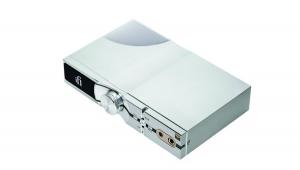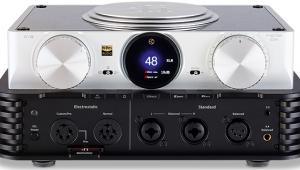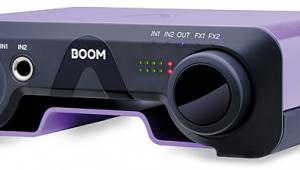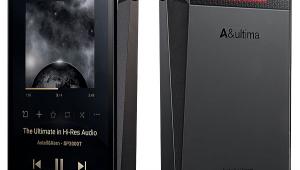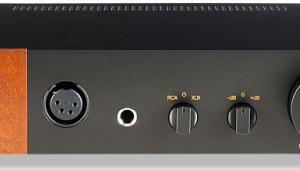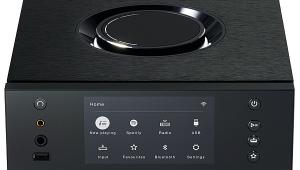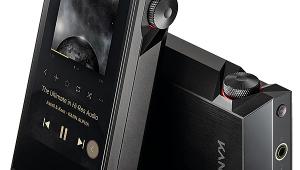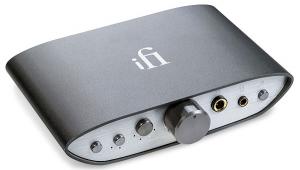Ferrum OOR Headphone Preamp The Hypsos Effect
The DC PSU requirement for the OOR is specified as 22-30V and that provided by the wall-wart supply is 24V. All the lab tests were obtained with this default configuration but with Ferrum also having its sophisticated, EISA Award-winning Hypsos PSU available as a £1100 upgrade, the potential benefits are already eagerly anticipated. The Hypsos [pictured, inset] is a fully programmable DC supply, and I set its output at intervals from 22V up to 30V, re-testing the OOR headphone amp along the way. In practice the OOR's internal PSU regulation is sufficiently tight that there's no difference in gain, maximum voltage or power output even when fed the full 30V DC input. This includes power output into a low 8ohm load which remained unchanged at 1.095W regardless of the extra current capacity offered by the Hypsos. In further testament to the quality of the OOR's internal regulation/filtering, neither was there any advantage in the 98.5dB A-wtd S/N ratio (re. 0dBV).
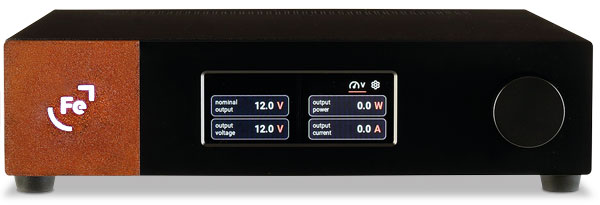
So was the Hypsos 'upgrade' entirely superfluous? Not entirely – as we discovered when testing the Hypsos with third-party DACs and headphone amps [HFN Mar '21], there was an improvement in distortion under load. Tested at 1V/32ohm, there was no change in THD at 0.015%/10kHz, 0.12%/20kHz and 0.5%/30kHz via the OOR/Hypsos PSU combo. But at higher output the Hypsos does assist in delivering lower THD from the OOR – at 10mW THD drops from 0.00045% to 0.0003%, at 100mW from 0.0008% to 0.0003% and at 1W/32ohm distortion dropped from 0.00095% to 0.00035%. Hardly huge numbers, and also orders of magnitude higher than the THD offered by any headphones, but still illustrative of a difference. PM
